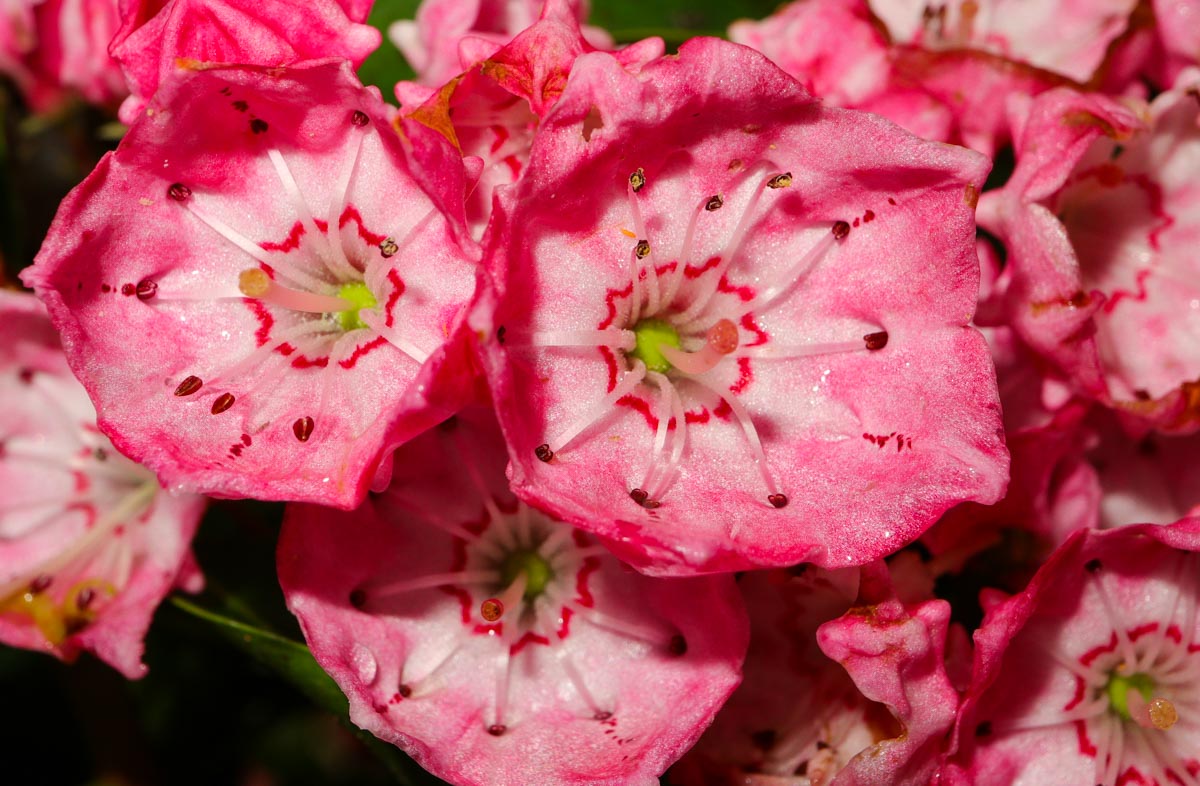I first remember seeing mountain laurel as a child on a June visit to my aunt and uncle, at Mohonk Mountain House in the Catskills of New York. We visited at least half a dozen other times over the years to see laurels at peak bloom, alerted by my aunt to especially good seasons. Every time it was memorable, clouds of flowers held on the shrubs that seemed to grow almost everywhere.
It is native to eastern North America, and locally grows in great abundance in the Appalachians. In certain areas of the mountains here, they form an almost impenetrable tangle of branches with many legends of people who were lost in them forever. It is easy to become disoriented in the middle of these dense forests, locally known as laurel slicks, but I always manage to find my way through the twisting maze. It can take a long time to navigate though, at least tripling the travel time.
There are more than 75 cultivars. This one in my garden is Sarah, with red buds opening to dark pink flowers. It is diminutive compared to its wild cousins, rarely growing more than around 5 feet tall. This photo shows the beautiful deep colors of the blossoms, and the structure of the flower.
Though not immediately obvious, mountain laurels are one of the world’s fastest flowers. Several years ago, a team of scientists conducted research on their pollination. As the petals open, the filaments attached to the anthers with their pollen sacs are pulled backward, forming a floral catapult. Using high speed video, they were able to determine that when triggered, the pollen is launched greater than 400 times the acceleration from gravity and can travel over eight miles an hour.
This explosive mechanism is triggered by bees that are then covered with pollen, carrying it between flowers as they visit. Further research reveals blooms not visited by pollinators set very few seeds. I’m not sure what the bees make of being effectively punched by the flowers. Flowers are often seen as the passive pollination partner, but their adaptations suggest they are capable of unexpected violence.
I have long been fascinated by symbiotic plant and animal interactions. Over the years I have studied pollination and seed dispersal in a wide range of species all over the globe. It is exciting that new discoveries continue to be made every day on subjects I can find right in my own yard. Species we easily overlook can offer amazing insights into the complex ways in which familiar organisms form uncommon bonds.
